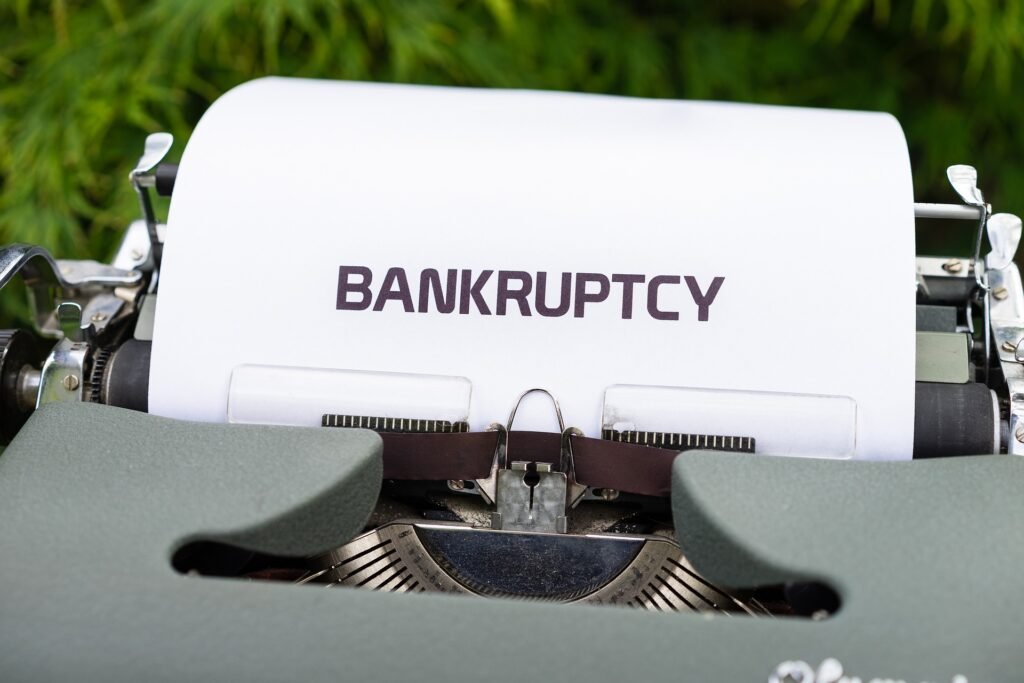When Is Bankruptcy the Best Answer for Your Debt Problems?
Debt can accumulate for various reasons, such as job loss, significant medical expenses, or poor financial decisions. When your income is insufficient to meet your monthly debt obligations, bankruptcy might seem like the only solution. However, it’s essential to understand the facts and alternatives before making a decision.

Key Facts About Bankruptcy:
Contents
Advantages of Declaring Bankruptcy
- Protection of Essential Assets: You won’t necessarily lose your home or car. Bankruptcy laws provide exemptions that can protect certain assets, ensuring you can maintain basic living standards even after filing.
- Spousal Assets and Pension: If you file for bankruptcy individually, your spouse’s assets remain unaffected, and your pension is protected. This means your partner’s financial security is not directly impacted by your bankruptcy filing.
- Credit and Bank Accounts: You can still apply for credit and maintain a bank account after declaring bankruptcy. While your credit score will take a hit, you have the opportunity to rebuild it over time.
Assets Not Protected by Bankruptcy
- Secured Debts: Debts like home loans are not discharged in bankruptcy. While you won’t automatically lose your home, you must continue making mortgage payments. Failure to do so can lead to foreclosure.
- Non-Dischargeable Debts: Alimony, child support, and most student loans are not forgiven through bankruptcy. You will remain responsible for these obligations despite filing for bankruptcy.
Alternatives to Declaring Bankruptcy
Before deciding on bankruptcy, consider the following alternatives which may provide relief without the long-term consequences.
1. Negotiating with Creditors
- Payment Agreements: Work out a payment plan with your creditors. They may agree to lower your interest rates or adjust your monthly payments to make them more manageable. Creditors prefer receiving reduced payments over none at all.
- Loan Extensions: Extending the term of your loans can lower your monthly payments, providing you with more time to pay off your debts. This can make your financial situation more manageable without the need for drastic measures.
2. Debt Consolidation Loans
- Combine Debts: A debt consolidation loan merges multiple smaller debts into one larger loan, typically at a lower interest rate. This can result in significantly lower monthly payments, simplifying your debt management.
- Benefits: Consolidation can reduce the stress of managing multiple payments and due dates. By having a single loan, you can focus on paying down your debt more effectively.
3. Credit Counseling
- Financial Analysis: Credit counseling can help you analyze your income and spending to pinpoint financial issues. Counselors work with you to create a budget and develop a plan to pay off your debts.
- Debt Management Plans: Some credit counseling agencies offer debt management plans, where they negotiate with creditors on your behalf to lower interest rates and monthly payments.
Is Bankruptcy the Right Option for You?
Declaring bankruptcy is a significant decision and should be considered carefully. While it can provide relief, it also has long-term consequences on your credit and financial standing.
1. Careful Consideration
- Evaluate All Options: Before deciding to file for bankruptcy, thoroughly consider all available alternatives. Bankruptcy has long-lasting effects, and there’s no turning back once you file.
- Long-Term Impact: Bankruptcy can remain on your credit report for up to 10 years, affecting your ability to obtain credit, secure housing, or even find employment in some cases.
2. Seek Professional Advice
- Legal Counsel: If you are certain that bankruptcy is your only option, consult with a lawyer or financial advisor. They can help you understand the different types of bankruptcy and determine the best course of action for your situation.
- Types of Bankruptcy: There are different types of bankruptcy, such as Chapter 7 and Chapter 13, each with its own rules and implications. Professional advice can help you choose the one that best suits your circumstances.
3. Personal Considerations
- Emotional Impact: Bankruptcy can be emotionally taxing. The stigma and personal feelings of failure can affect your mental health. Support from family, friends, or a counselor can be crucial during this time.
- Future Planning: Post-bankruptcy, it’s vital to develop a financial plan to avoid falling into debt again. This includes budgeting, saving, and perhaps continuing with credit counseling.
Weighing Your Options
Every financial situation is unique, and bankruptcy is not a one-size-fits-all solution. It won’t solve all your financial problems but might be the best option in some cases. After weighing all factors, you’ll be better equipped to decide if bankruptcy is the right choice for your circumstances.
Conclusion
Managing debt is challenging, but understanding your options can lead to better outcomes. Whether through bankruptcy or alternative methods, taking the right steps can help you regain financial stability. Carefully evaluate your situation, seek professional advice, and make an informed decision to pave the way for a more secure financial future.


